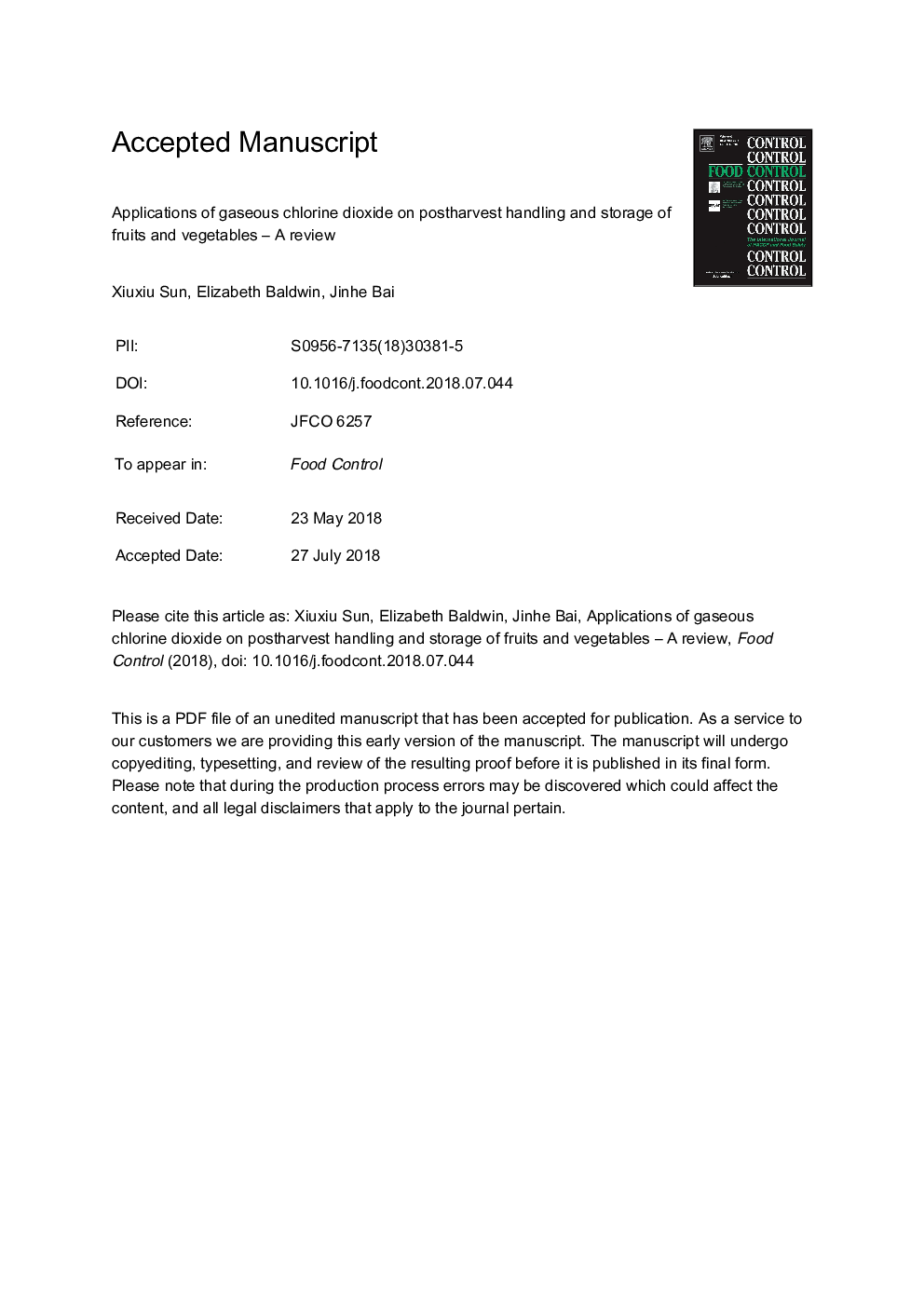| Article ID | Journal | Published Year | Pages | File Type |
|---|---|---|---|---|
| 8887635 | Food Control | 2019 | 35 Pages |
Abstract
Foodborne illness and decay loss caused by microorganisms are primary concerns for processors and marketers of fruits and vegetables. Interest in using gaseous chlorine dioxide (ClO2) treatments for postharvest sanitation has increased in recent years due to its many advantages over other sanitizers, including its powerful antimicrobial activity, and low environmental impact. It also has low corrosivity to packing equipment at food sanitation concentrations, but can be corrosive in highly concentrated aqueous solutions. Like many water mediated sanitizers, ClO2 has been applied to various commodities. However, gaseous ClO2 has many advantages over its aqueous formulations in addition to being less corrosive, including ease of mixing with air, rapid diffusion, and the ability to penetrate permeable surfaces and biofilms. A combination of aqueous sanitizer washing and application of gaseous ClO2 will enhance decontamination of both foodborne and plant pathogens. This article compares ClO2 with other commonly used sanitizers, discusses the mechanisms of ClO2 against microorganisms, and focuses intensively on the applications of gaseous ClO2, especially controlled-release ClO2, on fruits and vegetables to reduce pathogen infection and maintain food safety and quality of fresh produce.
Related Topics
Life Sciences
Agricultural and Biological Sciences
Food Science
Authors
Xiuxiu Sun, Elizabeth Baldwin, Jinhe Bai,
